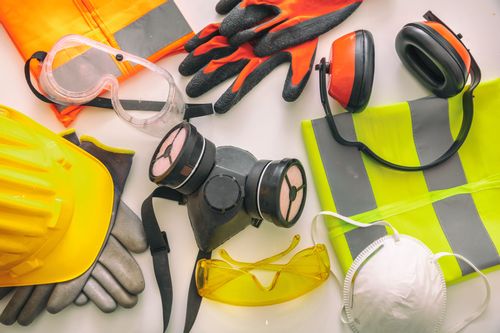ISO 15534-1:2000
(Main)Ergonomic design for the safety of machinery — Part 1: Principles for determining the dimensions required for openings for whole-body access into machinery
Ergonomic design for the safety of machinery — Part 1: Principles for determining the dimensions required for openings for whole-body access into machinery
Conception ergonomique pour la sécurité des machines — Partie 1: Principes de détermination des dimensions requises pour les ouvertures destinées au passage de l'ensemble du corps dans les machines
General Information
Standards Content (Sample)
INTERNATIONAL ISO
STANDARD 15534-1
First edition
2000-02-15
Ergonomic design for the safety of
machinery —
Part 1:
Principles for determining the dimensions
required for openings for whole-body
access into machinery
Conception ergonomique pour la sécurité des machines —
Partie 1: Principes de détermination des dimensions requises pour les
ouvertures destinées au passage de l'ensemble du corps dans les
machines
Reference number
ISO 15534-1:2000(E)
©
ISO 2000
---------------------- Page: 1 ----------------------
ISO 15534-1:2000(E)
PDF disclaimer
This PDF file may contain embedded typefaces. In accordance with Adobe's licensing policy, this file may be printed or viewed but shall not
be edited unless the typefaces which are embedded are licensed to and installed on the computer performing the editing. In downloading this
file, parties accept therein the responsibility of not infringing Adobe's licensing policy. The ISO Central Secretariat accepts no liability in this
area.
Adobe is a trademark of Adobe Systems Incorporated.
Details of the software products used to create this PDF file can be found in the General Info relative to the file; the PDF-creation parameters
were optimized for printing. Every care has been taken to ensure that the file is suitable for use by ISO member bodies. In the unlikely event
that a problem relating to it is found, please inform the Central Secretariat at the address given below.
© ISO 2000
All rights reserved. Unless otherwise specified, no part of this publication may be reproduced or utilized in any form or by any means, electronic
or mechanical, including photocopying and microfilm, without permission in writing from either ISO at the address below or ISO's member body
in the country of the requester.
ISO copyright office
Case postale 56 � CH-1211 Geneva 20
Tel. + 41 22 749 01 11
Fax + 41 22 734 10 79
E-mail copyright@iso.ch
Web www.iso.ch
Printed in Switzerland
ii © ISO 2000 – All rights reserved
---------------------- Page: 2 ----------------------
ISO 15534-1:2000(E)
Contents Page
Foreword.iv
Introduction.v
1 Scope .1
2 Normative references .1
3 General requirements.2
4 Passage openings .2
4.1 Opening for horizontal forward movement in upright posture.3
4.2 Opening for horizontal sideways movement over short distances in upright posture.4
4.3 Vertical movement through a duct, using a ladder.5
4.4 Manhole through which rapid active movement needs to be possible .6
4.5 Opening for entry in kneeling posture.6
Annex A (normative) Application of the measurements in practice.7
Annex B (informative) Symbols for dimensions and anthropometric body measurements.10
Bibliography.12
© ISO 2000 – All rights reserved iii
---------------------- Page: 3 ----------------------
ISO 15534-1:2000(E)
Foreword
ISO (the International Organization for Standardization) is a worldwide federation of national standards bodies (ISO
member bodies). The work of preparing International Standards is normally carried out through ISO technical
committees. Each member body interested in a subject for which a technical committee has been established has
the right to be represented on that committee. International organizations, governmental and non-governmental, in
liaison with ISO, also take part in the work. ISO collaborates closely with the International Electrotechnical
Commission (IEC) on all matters of electrotechnical standardization.
International Standards are drafted in accordance with the rules given in the ISO/IEC Directives, Part 3.
Draft International
...









Questions, Comments and Discussion
Ask us and Technical Secretary will try to provide an answer. You can facilitate discussion about the standard in here.